Related Research Articles
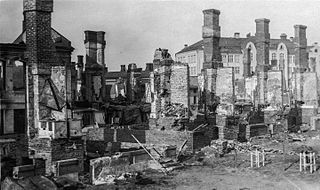
The Finnish Civil War was a civil war in Finland in 1918 fought for the leadership and control of the country between White Finland and the Finnish Socialist Workers' Republic during the country's transition from a grand duchy of the Russian Empire to an independent state. The clashes took place in the context of the national, political, and social turmoil caused by World War I in Europe. The war was fought between the Red Guards, led by a section of the Social Democratic Party, and the White Guards, conducted by the senate and those who opposed socialism with assistance late in the war by the German Imperial Army at the request of the Finnish civil government. The paramilitary Red Guards, which were composed of industrial and agrarian workers, controlled the cities and industrial centers of southern Finland. The paramilitary White Guards, which consisted of land owners and those in the middle and upper classes, controlled rural central and northern Finland, and were led by General C. G. E. Mannerheim.

Kaarlo Juho Ståhlberg was a Finnish jurist and academic who was one of the most important pioneers of republicanism in the country. He was the first president of Finland (1919–1925) and a liberal nationalist.

Pehr Evind Svinhufvud af Qvalstad was the third president of Finland from 1931 to 1937. Serving as a lawyer, judge, and politician in the Grand Duchy of Finland, which was at that time an autonomous state within the Russian Empire, Svinhufvud played a major role in the movement for Finnish independence. He was the one who presented the Declaration of Independence to the Parliament.

Nikolay Ivanovich Bobrikov was a Russian general and politician. He was the Governor-General of Finland and the Finnish Military District from August 29 [O.S. 17] 1898 until his death, during the early reign of Emperor Nicholas II, and was responsible for the Russification of Finland. After appointment as the governor-general, he quickly became very unpopular and was assassinated by Eugen Schauman, a Finnish nationalist born in Kharkiv.
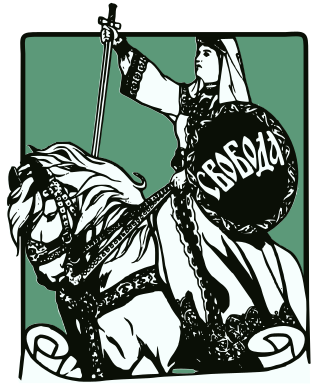
The Constitutional Democratic Party, also called Constitutional Democrats and formally the Party of People's Freedom, was a political party in the Russian Empire that promoted Western constitutional monarchy — among other policies — and attracted a base ranging from moderate conservatives to mild socialists. Party members were called Kadets from the abbreviation K-D of the party name. Konstantin Kavelin's and Boris Chicherin's writings formed the theoretical basis of the party's platform. Historian Pavel Miliukov was the party's leader throughout its existence.

The Finnish Declaration of Independence was adopted by the Parliament of Finland on 6 December 1917. It declared Finland an independent nation, ending its autonomy within Russia as the Grand Principality of Finland, with reference to a bill simultaneously delivered to the Parliament to make Finland an independent republic instead.

The policy of Russification of Finland was a governmental policy of the Russian Empire aimed at limiting the special status of the Grand Duchy of Finland and possibly the termination of its political autonomy and cultural uniqueness in 1899–1905 and in 1908–1917. It was a part of a larger policy of Russification pursued by late 19th–early 20th century Russian governments which tried to abolish cultural and administrative autonomy of non-Russian minorities within the empire.

The Grand Duchy of Finland, also translated as Grand Principality of Finland, was the predecessor state of modern Finland. It existed between 1809 and 1917 as an autonomous state within the former Russian Empire.
The Finnish Party was a Fennoman conservative political party in the autonomous Grand Duchy of Finland and independent Finland. Born out of Finland's language strife in the 1860s, the party sought to improve the position of the Finnish language in Finnish society. Johan Vilhelm Snellman, Yrjö Sakari Yrjö-Koskinen, and Johan Richard Danielson-Kalmari were its ideological leaders. The party's chief organ was the Suometar newspaper, later Uusi Suometar, and its members were sometimes called Suometarians (suomettarelaiset).
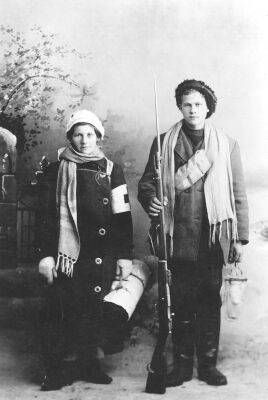
The Red Guards were the paramilitary units of the labour movement in Finland during the early 1900s. The Red Guards formed the army of Red Finland and were one of the main belligerents of the Finnish Civil War in 1918.

Finland declared its independence on 6 December 1917. The formal Declaration of Independence was only part of the long process leading to the independence of Finland.
The Minister–Secretary of State for Finland represented interests of the Grand Duchy of Finland in the Imperial Court in Saint Petersburg from 1809 to 1917. Before 1834 the title was secretary of state. The Russian Tsar was represented in Helsinki by the Governor General.
Parliamentary elections were held in the Grand Duchy of Finland on 1 and 2 July 1908.

The State Duma, also known as the Imperial Duma, was the lower house of the legislature in the Russian Empire, while the upper house was the State Council. It held its meetings in the Tauride Palace in Saint Petersburg. It convened four times between 27 April 1906 and the collapse of the empire in February 1917. The first and the second dumas were more democratic and represented a greater number of national types than their successors. The third duma was dominated by gentry, landowners and businessmen. The fourth duma held five sessions; it existed until 2 March 1917, and was formally dissolved on 6 October 1917.
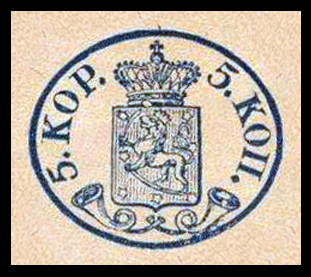
Finland has produced postage stamps for use since 1856.

The Finnish People's Delegation was the government of the Finnish Socialist Workers' Republic created by a group of members in the Social Democratic Party of Finland during the Finnish Civil War from January to May 1918.
The assassination of Nikolay Bobrikov took place on June 16 [O.S. June 3] 1904 when Finnish nationalist Eugen Schauman shot and killed the Governor-General of Finland, Nikolay Bobrikov, on a staircase in the Government Palace, which at the time was the main building of the Senate of Finland. After shooting Bobrikov, Schauman turned his gun on himself. The assassination was seen by many Finns as an act of resistance against Russian oppression, with Schauman being considered a national hero.
This article deals with the political history of Finland from prehistoric times, through the Swedish rule, to the Russian rule and the time of independent Finland (1917-). In this context, Finland broadly refers to the geographical area in which the current Finnish state is located.
The February Manifesto, also known as His Imperial Majesty's Graceful Announcement was a legislative act given by Emperor of Russia Nicholas II on 15 February 1899, defining the legislation order of laws concerning the Grand Duchy of Finland. This included all laws which also concerned the interest of the Russian Empire. The manifesto left the Diet of Finland only an advisory role in passing these laws. The February Manifesto was seen as the beginning of the first period of Russian oppression and generally the start of Russification of Finland.
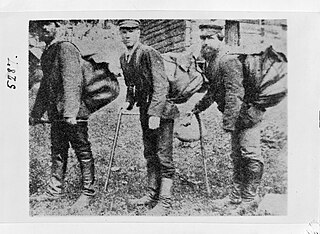
In Finland, the term "laukkuryssä" refers to travelling salesmen who went around Finland and northern Sweden from the middle 19th century to the early 20th century. Despite the name, "laukkuryssäs" were not ethnically Russian, but instead Karelian peasants. Their trade was called a "bag trade", after the large leathern backpacks they carried.
References
- ↑ Osmo Jussila: Suomen suuriruhtinaskunta 1809–1917, pp. 712–714, 725. WSOY, Helsinki 2004.
- 1 2 3 4 5 6 Jussila 2004, pp. 734–738.
- 1 2 3 4 5 6 7 8 Viljo Rasila: Torpparikysymyksen ratkaisuvaihe – Suomen torpparikysymys vuosina 1909–1918 , pp. 190–193. Historical research 81. Historical Society of Finland/Kirjayhtymä, Helsinki 1970.
- ↑ Jussila 2004, pp. 679–680, 721, 734.
- 1 2 Suuri venäläistämisohjelma julki (subscriber-only content), Helsingin Sanomat 29 November 2014. Accessed on 22 March 2021.
- 1 2 3 4 Vuosisatamme kronikka, p. 179. Gummerus, Helsinki 1987.
- ↑ Norssin jääkärit, history of the Normal Lyceum of Helsinki. Accessed on 22 March 2021.